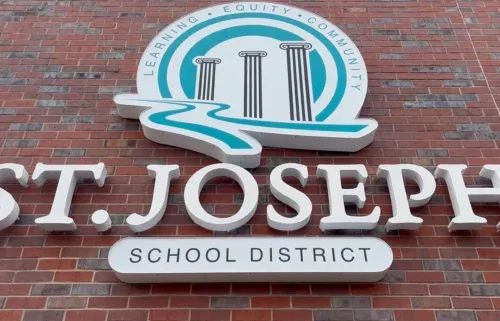St. Joseph begins study on four major intersections, including Ashland/Noyes, for potential layout changes




ST. JOSEPH, Mo. (News-Press NOW) -- Transportation planners have kicked off a monthslong study of four well-known and heavily-trafficked intersections in St. Joseph, studies that could pave the way for changes from traffic light improvements to potential roundabout construction.
The City of St. Joseph and GFT Infrastructure officially began a intersection improvement feasibility study Tuesday after City Councilmembers approved a $79,172 contract for the work at Monday's council meeting.
"These were some of the highest priority (intersections) we wanted to look at," said Max Schieber, transportation planner with the City of St. Joseph and the Metropolitan Planning Organization. "We're going to be looking at crash data, traffic flows, to say 'How can we improve this?'"
The four intersections in the study include:

Intersection No. 1: Outer Road and Riverside Road/Route AC.

Intersection No. 2: Ashland Avenue and Lover's Lane.

Intersection No. 3: Ashland Avenue, Sherman Avenue, Osage Street and Northwest Parkway.

Intersection No. 4: Noyes Boulevard and Frederick Avenue.
All four of the intersections will be assessed to determine potential safety, operational and geometric improvements. The intersections each present a unique layout that can make it prone to accidents and injuries.
"Ashland and Northwest Parkway is definitely a tough one that we've had a number of accidents at," Schieber said. "Outer Road and Route AC is one of our biggest."
The study, expected to be complete by next spring, will include traffic data collection, evaluation of current intersection conditions and development of conceptual alternatives.
He said the improvements could also be as simple as adjustments in traffic light patterns to improve traffic, ease congestion and reduce accidents.
"Roundabouts are something we're definitely looking at," he said. "And then also any possible changes with lights."
Schieber said the feasibility study likely wouldn't be possible without a Consolidated Planning Grant from the Federal Transit Administration, which is covering 80% of the $79,000 study.




